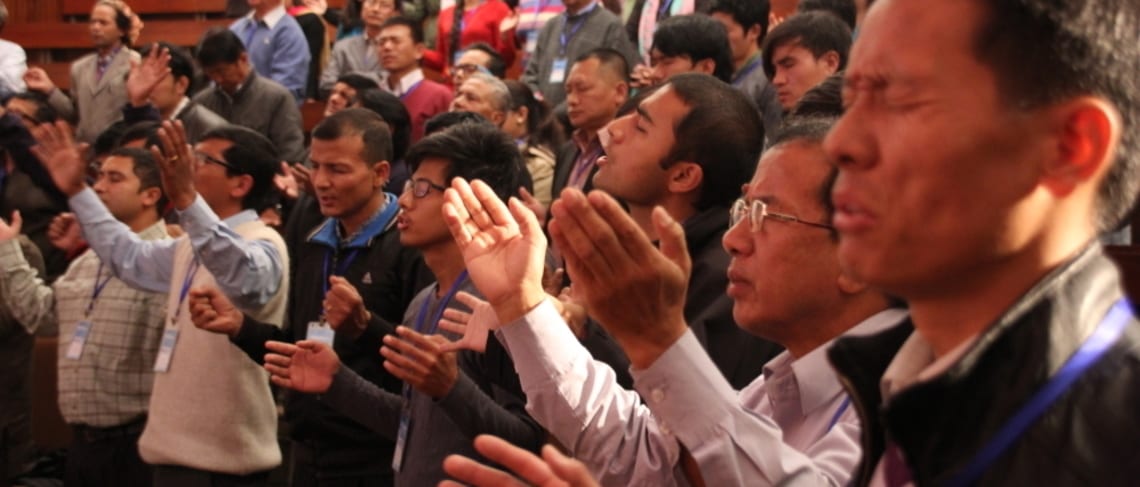
Fredrik Härén explores the connection between the quantity of creative ideas and the quality of creative ideas.

Fredrik Härén explores the connection between the quantity of creative ideas and the quality of creative ideas.

Sheila Heen describes three different kinds of feedback that leaders receive in the workplace.

There’s security in being needed. That’s probably why we, as leaders, get addicted to solving problems.
When someone brings us a problem, we begin to salivate. Our minds race through our experiences to identify instances when we’ve conquered this issue in the past. We identify the solution that worked the last time and relay it to the team. The team appreciates our wisdom and experience. We feel valued. Everyone wins.
Then over time, the number and magnitude of the problems grow. Initially it’s exhilarating because leaders are addicted to solving problems. Eventually though, it becomes overwhelming. We become the bottleneck. The growth slows down because we just can’t respond to everything.
Worse yet, we find our strongest leaders leaving the team. Our addiction to problem solving has elevated the role of manager and pushed the leaders away. We’ve elevated the capacity to identify and deliver problems, rather than identify and deliver solutions.
In the work my team and I do serving churches at The Unstuck Group, we find this is often one of the main reasons why small churches have hit growth barriers: the lead pastor is still trying to do everything.
Leaders, it doesn’t have to stay this way. In fact, if you want a healthy organization, it simply CAN’T stay this way. Here is a process to help your team move from a problem-focus to a solutions-focus.
When someone brings you a problem, send them away and encourage them to bring back three or four solutions to that problem. When they return with their proposed solutions, force them to explain which solution they would choose. Then, pick the solution that you think is best.
Eventually, your team learns to bring you solutions rather than problems. When that happens, encourage them to explain which solution they would choose. When you agree with their solution, have them implement it.
As time goes on, your team learns to bring you solutions with their recommendation for which solution they would choose. By now, they’ve learned how to process decisions within the framework of your mission, values and strategies. Assuming you agree with their recommendation, encourage them to make it happen.
Finally, your team learns to identify the problem, process options to solve the problem and select the best solution. They communicate to you what happened and how they solved the problem. If it worked, you reinforce that behavior by affirming their leadership. If it failed, you coach them and encourage them to take those types of risks moving forward.
This is how we move from managing people to leading people. This is an example of moving from delegating tasks to empowering people to make decisions and implement solutions.
Yes, this approach can be scary. It means decisions are no longer all in your hands. But leadership isn’t leadership if it isn’t released to others. Being a Christian leader means realizing it was never really in your hands anyway.
Are you feeling overwhelmed? Are you sensing you have the weight of every decision on your shoulders? Then it’s time to start at Step 1 and begin to raise up and empower other leaders to move your mission forward. You and your team will feel the difference.

One of the outcomes of The Global Leadership Summit (GLS) is the unique way it brings key leaders from the community together to solve local issues and foster transformation. Not only does this happen locally within cities where the GLS is held, but we also see this happen on a national level.
The more local key leaders can collaborate, the more successful transformation initiatives become.
One of our strategies for growing the GLS internationally is to hold regional meetings around the world, gathering GLS champions and leaders from various countries within a region to strategize on the marketing, growth and programming initiatives of the GLS. These meetings result in greater unity and vision around a common goal—to grow the GLS in order to help Christians grow their leadership to maximize Kingdom impact.
As we head into the 2018 Summit season, we’ve held these meetings in Europe, parts of Africa, Asia and Latin America as well.
To give you a small taste of what those meetings are like, here is a short clip of Samuel Karthak from Kathmandu, Nepal, sharing how a gathering of more than 80 churches united at a single Summit site location impacted the local police.
[…] We were there [at the Summit site location] a day earlier to prepare. While we were at the small city center in the marketplace, we met two policemen. […] When they saw the new faces, they came and asked us why we were there. We told them that we are having a GLS and we asked them to come tomorrow [to the event]. [They came] and they were there while we were having the GLS session. They were asking for all the information. They were so surprised that more than 80 churches came together. […] They said, ‘How come they come in one place? Because this has never happened before.’ […] The GLS can bring unity in God’s kingdom!
If you pray, partner or financially support the GLS globally, you are a part of uniting leaders who are bringing transformation to their communities! Thank you!

Simon Sinek is best known for popularizing the concept Start with Why through his well-known TED talk on this topic. However, Sinek is also on a mission to create a world where people wake up inspired to go to work and feel fulfilled by what they do. He believes that when you think, act and communicate, starting with why, you can inspire others. We are thrilled to welcome Simon Sinek to the 2018 Global Leadership Summit Faculty.
Watch this video below to familiarize yourself with Sinek’s vision for the power of why as you prepare to hear him speak at the Summit this August.
Simon Sinek is an unshakable optimist. He believes in a bright future and our ability to build it together. Best known for popularizing the concept “Start with Why,” his talk on this topic is the third most-watched TED talk of all time. A New York Times best-selling author, Sinek’s next book, The Infinite Game, is due out October 2018. Hear more from Simon at the 2018 GLS.

“It is almost impossible to describe the effect that attending The Global Leadership Summit has had on the Salem Home organization,” said Sherry Janzen, CEO of Salem Home, a personal care home for individuals who have a disease process that prohibits them from living independently. “But I do know that my leadership team’s perspectives have become more positive in thought, bold in expression and noticeably more rooted in faith. It influences everything that happens in our organization.
“It is also important for our support staff to attend the Summit with our leadership team because if they don’t know what we are trying to build, they cannot support us in the endeavor. Of all the educational events we have the opportunity to attend, this event is the only one that the entire leadership team says is a must. They will give up every other opportunity just so they can attend. It feeds our souls. It impacts our organization in significant ways.”
These are the three ways Sherry Janzen’s organization got better by attending the Summit:
 In 2008, with inspiration from the Summit, Salem Home embarked on a journey to provide Christ-centered care. “Personally, my biggest takeaway each year is how critical it is for leaders to be grounded in their faith,” says Sherry. “Business and leadership theories can change over time, but if a leader is not grounded in their faith, leading can be like chasing windmills.
In 2008, with inspiration from the Summit, Salem Home embarked on a journey to provide Christ-centered care. “Personally, my biggest takeaway each year is how critical it is for leaders to be grounded in their faith,” says Sherry. “Business and leadership theories can change over time, but if a leader is not grounded in their faith, leading can be like chasing windmills.
“There have been times in my career where it seemed like there would be no end to a situation. But prayer and complete trust that God has everything under control carried me through. I leave each Summit with a sense of renewal in this truth. This truth has also made us braver in trying new ways of doing things. It has definitely made us bolder in word and deed as we became a faith-based organization with a mission to provide Christ-centered care.”
 When Salem Home started its journey toward being Christ-centered, they did an in-depth evaluation of who they were, what they do, and why and how they do what they do. “In the process, we could not find a model of care that fit our mission,” says Sherry. “So we created our own model of care based on relationships. Our lives are filled with relationships, but Christ is the most important relationship.
When Salem Home started its journey toward being Christ-centered, they did an in-depth evaluation of who they were, what they do, and why and how they do what they do. “In the process, we could not find a model of care that fit our mission,” says Sherry. “So we created our own model of care based on relationships. Our lives are filled with relationships, but Christ is the most important relationship.
“Since then, we have moved the type of care staff provides from task-oriented to relationship-oriented. As a result, residents can find meaning and purpose in their day through the ways we care for them.
“To ensure that we are truly providing relationship-centered care, we use a measurement tool that measures the resident’s actual life experience during their day, not what we as staff think their day is like. This tool has led us to provide care in places we didn’t even think of. My vision is that we are an example of how care can be provided in nursing homes within the context of faith, and be known for our compassion and excellence in giving the residents their best-lived experience while they are with us.”
 “One of the most powerful sessions at the Summit for us was when we learned that as leaders, we speak for those who cannot speak for themselves,” says Sherry. “That has changed our purpose for doing what we do. Many times we are not quite in step with the provincial direction because we feel our mission is to ensure that those who live in nursing homes, regardless of their abilities, are treated with the same dignity and respect as anyone else.
“One of the most powerful sessions at the Summit for us was when we learned that as leaders, we speak for those who cannot speak for themselves,” says Sherry. “That has changed our purpose for doing what we do. Many times we are not quite in step with the provincial direction because we feel our mission is to ensure that those who live in nursing homes, regardless of their abilities, are treated with the same dignity and respect as anyone else.
“If I look back over the past nine years and how much the organization has changed, I see that the Summit has clearly influenced our vision, crystalized our mission and enabled us to communicate this throughout the staff.
“Because our purpose is big—speaking up for those who cannot speak for themselves—we have become very deliberate in the message we communicate to our community, the regional structure we work in and the provincial health system we are part of. We have widened our sphere of influence in the regional setting through our model of care.”
“For anyone who is unsure about attending the Summit, I encourage them to try it once,” says Sherry. “There is nothing to lose except their time, and there is everything to gain. The presentations are filled with challenges and inspiration to become a better leader. Because of the team-building that occurs, we are challenged by speakers from outside the health system, opening us up to a different vision for working through the issues that confront us.
“For leaders who are tired and/or disenchanted about where they are, the Summit feeds your soul and may give you a different perspective on why you are leading your organization.”

Our friend John C. Maxwell (GLS 2016, 2005, 1999, 1996) recently released a revised and updated 25th anniversary edition of his classic book, Developing the Leader Within You 2.0. In the excerpt below, he explains how faulty assumptions lead to imperfect outcomes.
More and more people recognize the value of good leadership, yet not many work to become better leaders. Why is that?
Despite the widespread prevalence of leadership books and classes, many people think leadership isn’t for them. Maybe it’s because they make one of these assumptions:
1) “I’m Not A Born Leader, So I Can’t Lead.”
Leaders are not born. Well, okay, they’re born. I’ve never met an unborn leader. (And I wouldn’t want to.) What I really mean is that your ability to lead is not set at birth. While it’s true that some people are born with more natural gifts that help them lead at a higher level, everyone has the potential to become a leader. And leadership can be developed and improved by anyone willing to put in the effort.
2) “A Title And Seniority Will Automatically Make Me A Leader.”
I believe this kind of thinking was more common in my generation and that of my parents, but it can still be seen today. People think they need to be appointed to a position of leadership, when the reality is that it requires desire and some basic tools to become a good leader.
3) “Work Experience Will Automatically Make Me A Leader.”
Leadership is like maturity. It doesn’t automatically come with age. Sometimes age comes alone. Tenure does not create leadership ability. In fact, it’s more likely to engender entitlement than leadership ability.
4) “I’m Waiting Until I Get A Position To Start Developing As A Leader.”
The last assumption has been the most frustrating to me as a teacher of leadership. When I first started hosting leadership conferences, people would say, “If I ever become a leader”—meaning if they were appointed to a leadership position—“then maybe I’ll come to one of your seminars.” What’s the problem? As legendary UCLA basketball coach John Wooden said, “When the opportunity comes, it’s too late to prepare.” If you start learning about leadership now, not only will you increase your opportunities, but you’ll also make the most of them when they arrive.
How will you develop the leader within you? The bottom line is that if you’ve never done anything to develop yourself as a leader, you can start today. And if you have already begun your leadership journey, you can become a better leader than you already are by intentionally developing the leader within you.
Let’s start with the most important concept of the 10: influence. After more than five decades of observing leaders around the world and many years of developing my own leadership potential, I have come to this conclusion: Leadership is influence. That’s it—nothing more, nothing less. That’s why my favorite leadership proverb is, “He who thinketh he leadeth and hath no one following him is only taking a walk.”
For you to be a leader, someone has to be following you. I love what James C. Georges, founder and chairman of the PAR Group, said in an interview I read years ago: “What is leadership? Remove for a moment the moral issues behind it, and there is only one definition: Leadership is the ability to obtain followers.”
Anyone—for good or ill—who gets others to follow is a leader. That means Hitler was a leader. (Did you know that TIME named Hitler their Man of the Year in 1938 because he had greater influence on the world than anyone else?) Osama Bin Laden was a leader. Jesus of Nazareth was a leader. So was Joan of Arc. Abraham Lincoln, Winston Churchill, Martin Luther King, Jr. and John F. Kennedy were leaders. The value systems, abilities and goals of all of them attracted followers. They all had influence.
Influence is the beginning of true leadership. If you mistakenly define leadership as the ability to achieve a position instead of attracting followers, then you will go after position, rank or title to try to become a leader. But this type of thinking results in two common problems. First, what do you do if you attain the status of a leadership position but experience the frustration of having no one follow you? Second, what if you never achieve the “proper” title? Will you keep waiting to try to make a positive impact on the world?
(Taken From Developing the Leader Within You 2.0 by John C. Maxwell © January 16, 2018. Used by permission of HarperCollins Leadership. www.harpercollinsleadership.com)

 Stephen Wilburn was comfortable in his ministry role as a worship leader at his church. But God doesn’t always keep people in their comfort zone for long. He often calls on the humble leader to stretch beyond himself.
Stephen Wilburn was comfortable in his ministry role as a worship leader at his church. But God doesn’t always keep people in their comfort zone for long. He often calls on the humble leader to stretch beyond himself.
In 2008, God used The Global Leadership Summit to call this worship pastor out of his comfort zone. The ministry adventure not only changed his life, but the lives of countless numbers of human-trafficking survivors, as well as people with disabilities.
“I’m not the leader I used to be,” says Stephen, pastor of worship at Christ Community Church in West Chester, Pennsylvania. “The Summit developed in me a far greater vision than I could have had on my own. Because of the Summit, I’ve not only become a better leader as a worship pastor, I’ve also been inspired to look for ways God is leading me into a grander vision, giving me the courage to obey his voice, even in the challenging times. I started an advocacy group to fight human trafficking, and was inspired to finish my Doctor of Ministry dissertation on the inclusion of people with disabilities in the corporate worship of the church.”
Two specific Summit sessions profoundly influenced Stephen’s leadership path. Leading from Here to There, and Just Courage: Charging in the Darkness.
“Now my initial question whenever I’m helping people through a change process is, why can’t we stay here?” Stephen explains. “Asking that question has helped inspire and get buy in from those I’m working with.”
 The concept of leading people from here to there was an essential tool in his next endeavor, after he was deeply impacted by Gary Haugen’s session and learned about the devastating reality of human trafficking in our world today.
The concept of leading people from here to there was an essential tool in his next endeavor, after he was deeply impacted by Gary Haugen’s session and learned about the devastating reality of human trafficking in our world today.
“Gary’s session directly inspired me to start my anti-human trafficking advocacy group in 2008,” says Stephen. “Because of Gary’s talk, I began volunteering as a local advocate with International Justice Mission and eventually found others who wanted to join me in fighting human trafficking. I went on a trip to Cambodia, and my passion really ignited. Hearing about the unbelievable trauma these people had been through, and then seeing the incredible restoration that God had done in their lives, gave me great hope that justice really was possible. I believed God was calling me and the church to bring freedom to those in bondage.
“Over the past five years, our group, Chester County Abolitionists, has helped raise over $70,000 for International Justice Mission through events like our 5k For Freedom and Stand Up For Freedom comedy night. We’ve also visited dozens of local hotels to offer resources and training in how to spot victims of trafficking in the hospitality industry. We’ve had dozens of meetings with our state and federal representatives, asking them to support anti-trafficking legislation. And we’ve helped gather supplies for organizations working with victims of trafficking in our community. All of that has happened because I attended the Summit in 2008 and felt God moving me to be an agent of justice in the world, and to help bring freedom to slaves around the globe.
“The most surprising thing God has taught me is that it only takes a small step of faith to create something incredible. If you had told me 10 years ago that I’d be meeting with U.S. Senators and Congressman about the issue of human trafficking, I probably would have laughed. And yet it was the small decisions to be faithful over the years that have brought me here. God has done all the work; all I’ve tried to be is obedient.”
Stephen’s heart grew. Not only was God using him to bring awareness and help fight human trafficking, but he also laid it on his heart to serve those with disabilities by providing opportunities for them in worship.
A young man in his church named Ryan, with severe cerebral palsy, was Stephen’s inspiration for his dissertation. When Stephen discovered some of Ryan’s innate musical gifts, he wanted to come up with a way for him to contribute to the worship services. Today, Ryan is a regular part of the worship team. “Going on this journey with Ryan inspired me to do my doctoral dissertation on inclusion of people with disabilities in corporate worship,” said Stephen. “I saw the blessing his participation was to our church community, and I wanted to share that with other churches.”
The Summit inspired Stephen to expand his vision, and go beyond his comfort zone, seeing people in the way God sees them.
“My grander vision is to see people become who God made them to be and discover the incredible contribution they can make for his kingdom,” says Stephen. “No matter where a person comes from or what their limitations are, God has given them an ability to bless others. They can share his love and salvation with the world, if they just have the freedom and support to do so.”
“The Summit is my annual opportunity to recharge, retool and reinvest in my leadership,” Stephen shares. “Every single time I’ve attended the Summit, I have come away a better leader, a better minister and a better follower of Jesus. The Summit has and continues to shape my life, and if those on the fence take a step of faith, I know it can change their lives too.”

Watching the Barbara Bush funeral coverage, I was particularly moved when her biographer, Jon Meacham, said that the former first lady had lived a “consequential life.” Meacham said that by living a consequential life, Mrs. Bush earned the respect of millions—even though she had never earned a paycheck.
That statement made me pause. Sometimes as leaders we are so busy leading, we don’t pause often enough to assess whether our leadership is consequential enough. Does our impact land in all the ways we intended?
If we find ourselves so entrenched in the duties of leadership without stopping to measure and evaluate our true influence, it would be easy to spend a life and leadership only to find our results inconsequential.
To be consequential, I don’t think we have to have notoriety, big titles, great wealth or many other descriptions afforded to people we consider to be consequential. Perhaps we just need to be sure we are people of influence to those whom God has entrusted to our care of service.
In the end, I believe the name we leave behind will be determined by our stewardship of time, talent and treasure. The Bible reminds us of this principle: Based on the gift each one has received, use it to serve others, as good managers of the varied grace of God. (1 Peter 4:10)
This is the call to leaders: be a faithful steward of what has been entrusted to us. Stewarding the time and talent of the people we lead may be the greatest calling for leaders. Just like financial resources, talent is a resource to be stewarded, not squandered. Investing deeply in talent is the key to the stewardship of talent.
Here are 5 investments you can make to steward talent effectively:
Even when unemployment rates are low and good employees are hard to find, take the time to select great talent. People decisions are the most important decisions a leader makes. Are you investing in the process of selecting talent as if it is your most important decision?
Start every new employee with a development plan so they can quickly add value to their new role. Follow the plan so as they grow, your organization benefits. Focus not only on the skills needed for the role they currently are in, but also for roles they may have in the future. Do your development plans prepare your organization for roles needed to grow your organization?
Investing in the talent you already have is much less expensive than hiring, training and orienting new people to your organization. Turnover costs amount to far more than just the hard costs. They also include the costs of disruption in your organization and the loss of productivity that can occur when employees leave.
The most important reason people stay with an organization is the quality of their leader. Are you investing in development that helps your leaders become the kind of leader people desire to work for?
Employees cannot be left to figure it all out on their own. They need a leader who will invest the time to set clear goals, communicate expectations, hold talent accountable and provide useful performance feedback. Are you making the necessary investment to help the individuals you lead understand what is expected, how to succeed and how to improve performance?
Mentoring is helping the next generation of leaders understand the culture of the organization and how to navigate it successfully. These skills must be caught and taught by people who have been successful in growing their own careers and contributing to the organization. Are you investing in the next generation of leaders by spending time with them and helping them understand the nuances to relationships and culture in your organization?
Investing in the talent entrusted to us contributes to the success of our organizations and helps our employees grow their careers. But more importantly, we are practicing faithful stewardship of a God-entrusted resource.
The outcome of faithful stewardship could be consequential leadership. To the person whose life is deeply impacted by your investment, you may even find you have led a consequential life.

Liz Bohannon, entrepreneur and founder of Sseko Designs, describes how “magic wand” meetings at her organization give space for innovation and creativity.
“We welcome and encourage comments on this site. There may be some instances where comments will need to be edited or removed, such as:
If you have any questions on the commenting policy, please let us know at heretoserve@globalleadership.org”
Recent Comments